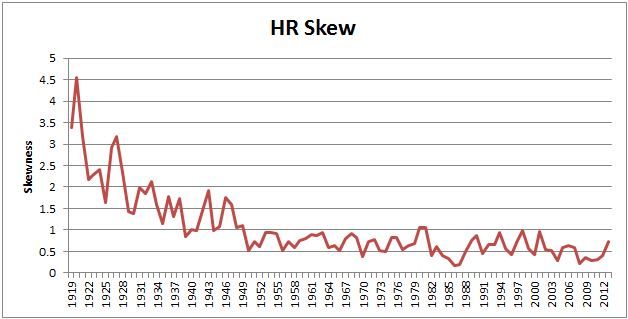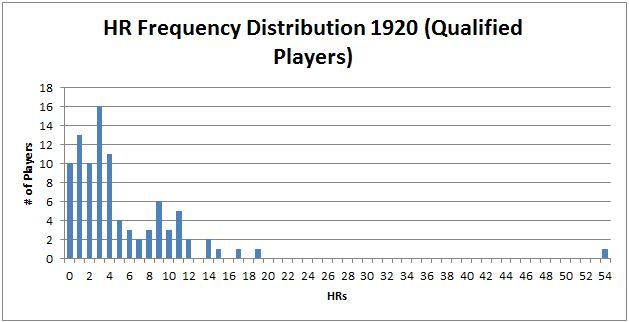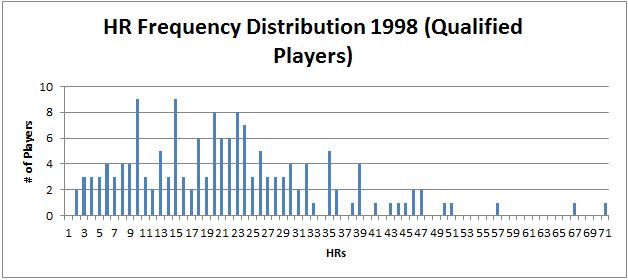Living in Dangerous Times
Let’s start with the surprising conclusion: Batters are getting hit by pitches at near-historic rates. For all that you hear about pitchers who won’t pitch inside, and umpires issuing warnings that make it impossible to throw at hitters, and batters being unwilling to take one for the team, we’re seeing batters get hit by pitches at the highest rate since the turn of the last century.
I looked at each decade since 1901, the first year there were two leagues. Using FanGraphs’ Leaders page, I calculated the number of hit batsmen per 100 games played:
1901-1910 6.5
1911-1920 4.9
1921-1930 3.6
1931-1940 2.6
1941-1950 2.4
1951-1960 3.1
1961-1970 3.4
1971-1980 3.1
1981-1990 3.0
1991-2000 4.7
2001-2010 5.8
2011-2014 5.3
Baseball was kind of a wild game in the early days, with all sorts of shenanigans on the ball field, including throwing at batters. Hit batsmen were already in decline when, on August 16, 1920, Carl Mays hit Ray Chapman in the head with a pitch, killing him. Hit batters declined through the next three decades, bottoming out at 2.14 per 100 games in 1946. They stayed around 3 or so per 100 games through the 1980s, and then they took off. Here are the 30 years with the most batters hit by a pitch per 100 games:
1. 1901 8.0 11. 1907 6.1 21. 2008 5.5
2. 1903 6.9 12. 2004 6.1 22. 2011 5.3
3. 1905 6.9 13. 1909 6.0 23. 2009 5.3
4. 1902 6.8 14. 2003 6.0 24. 2013 5.2
5. 1904 6.6 15. 2006 6.0 25. 1913 5.2
6. 1911 6.5 16. 2005 6.0 26. 2010 5.2
7. 2001 6.2 17. 2007 5.8 27. 1999 5.1
8. 1908 6.1 18. 2014 5.7 28. 1998 5.1
9. 1910 6.1 19. 2001 5.7 29. 2000 5.1
10. 1906 6.1 20. 1912 5.5 30. 2012 5.1
Isn’t that strange? Every year from 1901 to 1913 and every year since 1998. Nothing from the intervening 84 seasons. It raises two questions:
- What’s going on? Why have hit batsmen increased despite efforts to cut down on beanball wars? It really has turned on a dime. There were 3.8 hit batsmen per 100 games in 1992, the 68th straight year below 4.0. It hasn’t been below that level since.
- When will it change? Andrew McCutchen’s plunking was a big story but didn’t lead to any calls for change. Amid laudable efforts to improve player safety, from batting helmets to neighborhood plays to home plate collision rules, hit batters are returning to levels not seen since the year before Babe Ruth’s rookie season. There have been some pretty terrible beanings, like Jason Heyward’s last year. Let’s hope it doesn’t take something worse than that to reverse the trend.



